Carpenter bees, known for their role as pollinators, are often misunderstood due to their habit of boring into wood. Carpenter bees feed on flowers, fruits and weeds as well. Understanding their diet and survival needs can help us appreciate their ecological importance while learning how to manage their presence around our homes.
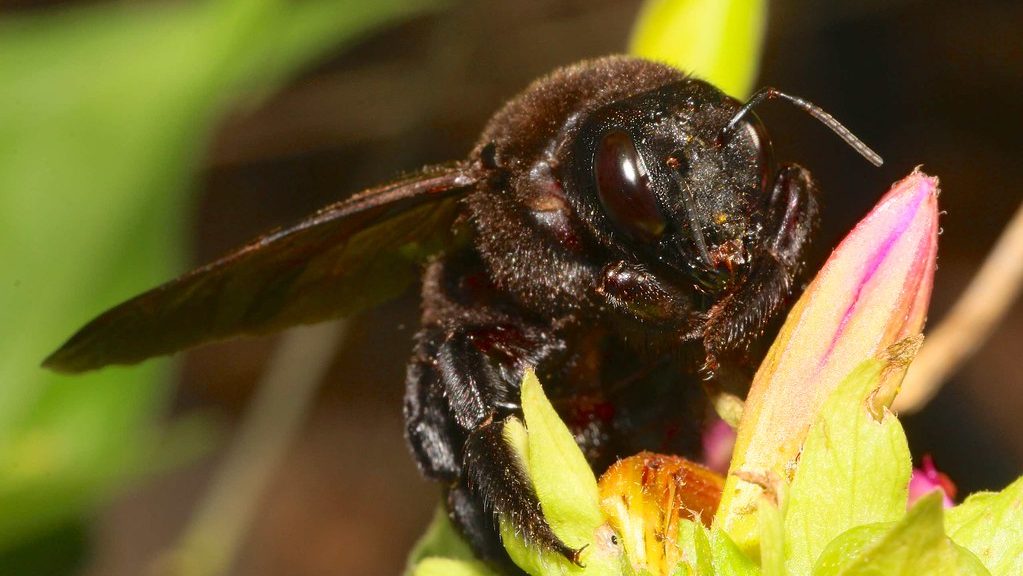 Instead of making honey, they use gathered pollen to create a food paste known as bee bread to nourish their larvae. Despite their solitary lifestyle, their foraging behavior plays a crucial role in pollination, supporting plant biodiversity and agricultural production.
Visit our Species, Control, and DIY Guide sections for additional resources on carpenter bees and ways to tackle a carpenter bee infestation.
Instead of making honey, they use gathered pollen to create a food paste known as bee bread to nourish their larvae. Despite their solitary lifestyle, their foraging behavior plays a crucial role in pollination, supporting plant biodiversity and agricultural production.
Visit our Species, Control, and DIY Guide sections for additional resources on carpenter bees and ways to tackle a carpenter bee infestation.
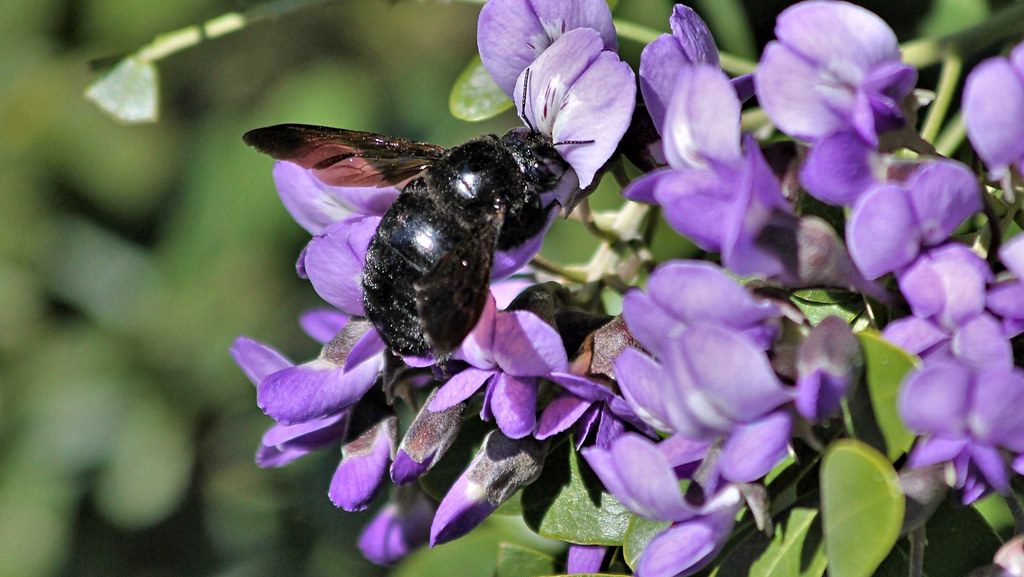


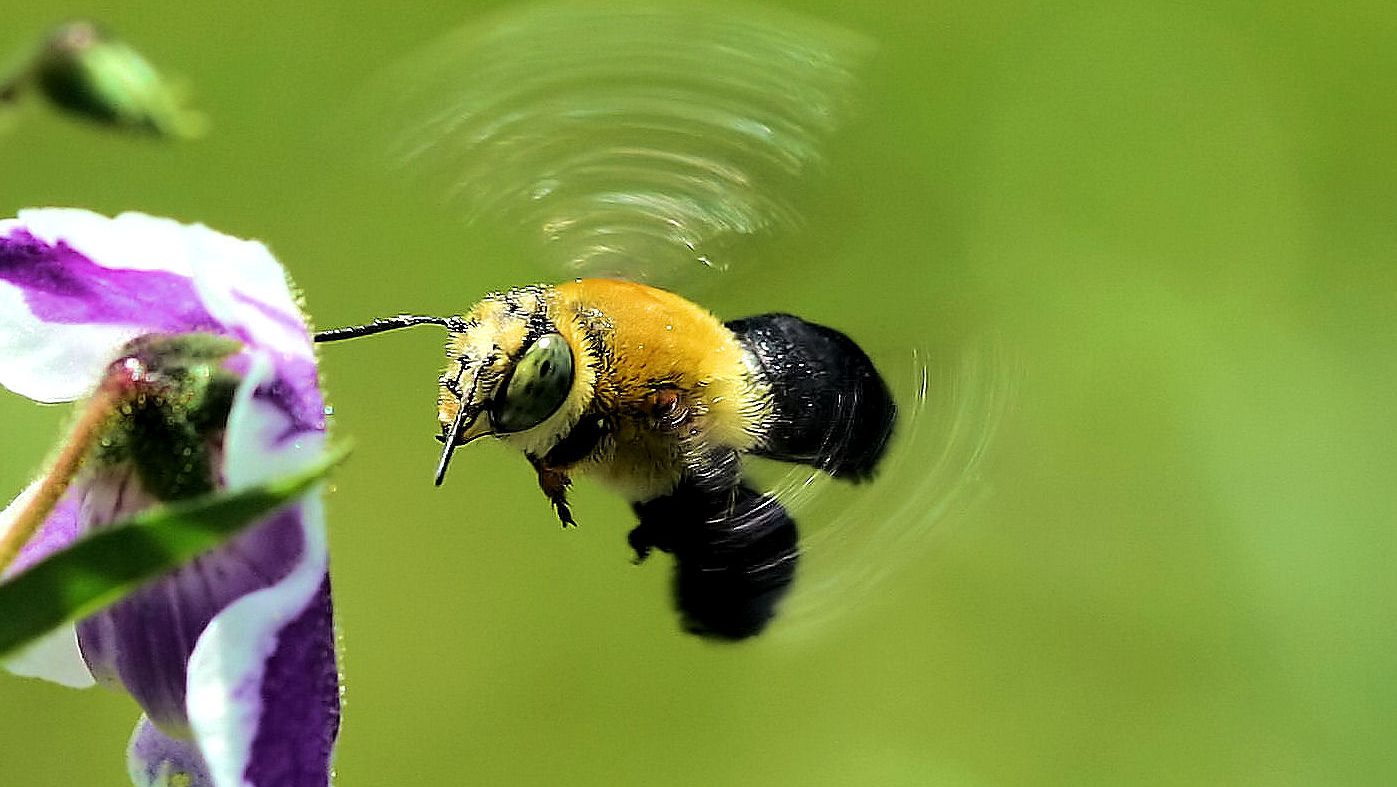
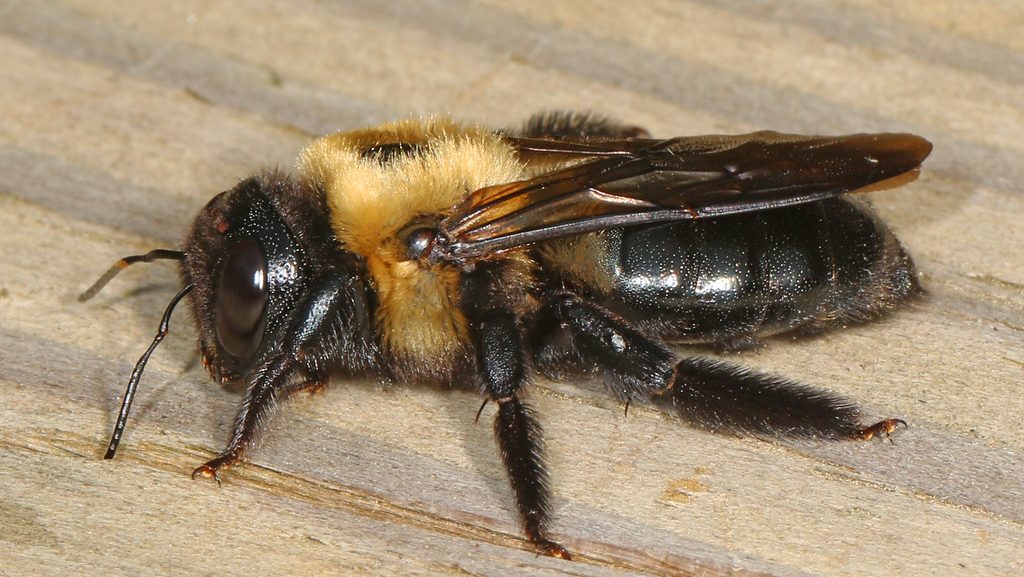
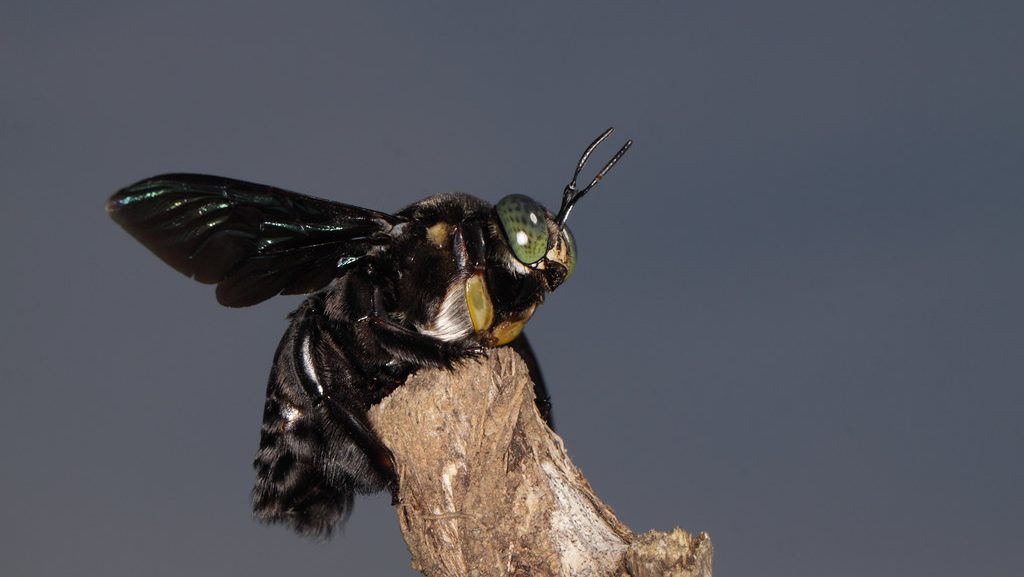 Prevention techniques might not be enough if you’re already dealing with a carpenter bee infestation in your home. Our pest control professionals provide a customized solution to protect your home effectively.
Prevention techniques might not be enough if you’re already dealing with a carpenter bee infestation in your home. Our pest control professionals provide a customized solution to protect your home effectively.
What is Carpenter Bees’ Favorite Food
Carpenter bees have a diet centered around natural sugars and proteins. Their primary sources of nutrition are nectar and pollen from flowers. These two components are vital for their survival and reproduction. Unlike honeybees, which live in large colonies and produce honey, carpenter bees are solitary creatures. Instead of making honey, they use gathered pollen to create a food paste known as bee bread to nourish their larvae. Despite their solitary lifestyle, their foraging behavior plays a crucial role in pollination, supporting plant biodiversity and agricultural production.
Instead of making honey, they use gathered pollen to create a food paste known as bee bread to nourish their larvae. Despite their solitary lifestyle, their foraging behavior plays a crucial role in pollination, supporting plant biodiversity and agricultural production.
What Does a Carpenter Bee Eat?
Carpenter bees feed on a variety of floral resources. Their foraging preferences are influenced by the accessibility of nectar and pollen. Here are some of the key sources that attract them:Plants That Attract Carpenter Bees
-
Flowers: Open-faced flowers such as daisies, sunflowers, and coneflowers are particularly appealing to carpenter bees due to the easy access to nectar and pollen.
-
Fruit Trees: Blossoms of fruit-bearing trees like apple, pear, and cherry trees offer a seasonal feast for carpenter bees.
-
Ornamental Plants: Garden plants like azaleas, petunias, and morning glories are frequent feeding sites. Their colorful blooms and rich nectar are irresistible to foraging bees.
Carpenter Bees’ Favorite Food
While carpenter bees do not have a favorite food, they do exhibit a strong preference for specific flowers and plants. Their dietary habits favor brightly colored, fragrant flowers with accessible nectar. Carpenter bees have strong mandibles, allowing them to access nectar in flowers with complex or deep structures. This adaptability makes them versatile feeders capable of foraging from a wide range of blooms.

Not getting a solution?
Get your free pest control estimate today!Top Favorite Food Sources of Carpenter Bees
Carpenter bees are drawn to certain plants that provide both ample nectar and pollen. Here are their preferred feeding spots:Plants Carpenter Bees Love
-
Blue and Purple Blooms: Plants like lavender, wisteria, and salvia are highly attractive to carpenter bees due to their vivid colors and abundant nectar supply.
-
Native Wildflowers: Native plants like milkweed and goldenrod support carpenter bees by offering a natural and consistent source of nourishment.
-
Weeds: Even common weeds like clover and dandelions serve as food sources for carpenter bees. These plants are often found in lawns and gardens, making them easily accessible.
How Long Can a Carpenter Bee Live Without Food or Water?
Carpenter bees, like most insects, need a constant supply of food and water to maintain their energy and hydration levels. However, their ability to survive without food and water is limited. On average, carpenter bees can live for 3 to 5 days without food or water, though this timeframe depends on several external factors, such as weather conditions, energy reserves, and activity levels.
Energy Levels
Bees that have recently consumed a large amount of nectar have higher energy reserves, allowing them to survive longer without food and water.
Activity Levels
Active bees burn energy quickly and deplete their stored nutrients. Dormant bees or those in a resting state can survive longer without nourishment.
Weather Conditions
Environmental conditions, particularly temperature and humidity, play a role in their survival. In high humidity, moisture in the air may help sustain them longer.Tips to Remove Carpenter Bees from Your Property
-
Paint or stain wood surfaces.
-
Seal cracks and holes.
-
Install bee traps.
-
Plant attractive alternatives.
-
Avoid softwood.
Myth and Fact about Carpenter Bees
Here are a few myths and facts about carpenter bees:| Myth | Fact |
|---|---|
| Carpenter bees eat wood. | They bore into wood for nesting, but they only eat nectar and pollen. |
| Carpenter bees are aggressive and sting often. | Males can’t sting, and females sting only if provoked. |
| Carpenter bees cause irreparable damage to wood. | They create shallow tunnels, and damage can be repaired or prevented. |
| Carpenter bees are pests with no ecological benefits. | They are vital pollinators that support biodiversity and agriculture. |
| Killing carpenter bees is the best way to protect wood. | Sealing wood and providing alternative food sources is a more effective and eco-friendly approach. |





